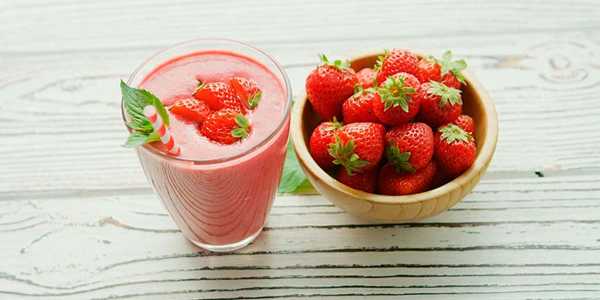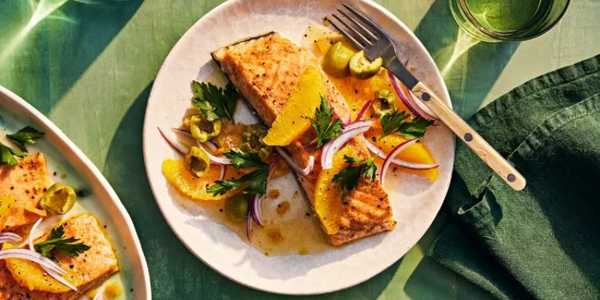How To Make Thai Curry Paste At Home (With Easy Curry Recipes)
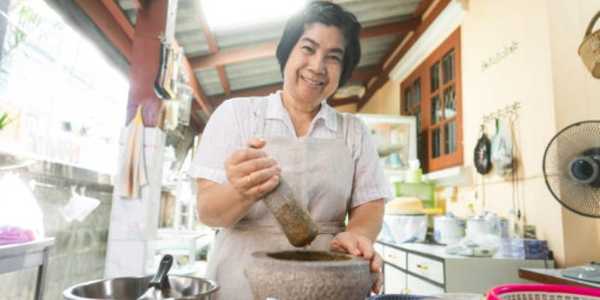
If your Thai curry never tastes quite right, it may be due to the store-bought paste you're using. Many brands use fillers and preservatives that dull the flavours. Fresh, homemade curry paste brings out the bold, balanced heat and brightness that authentic Thai curry is known for.
Picking The Right Ingredients
Many restaurants around the world invest a significant amount in fresh ingredients to maintain their flavours. Freshness is at the heart of a good curry, so it's worth learning this as a home cook too.
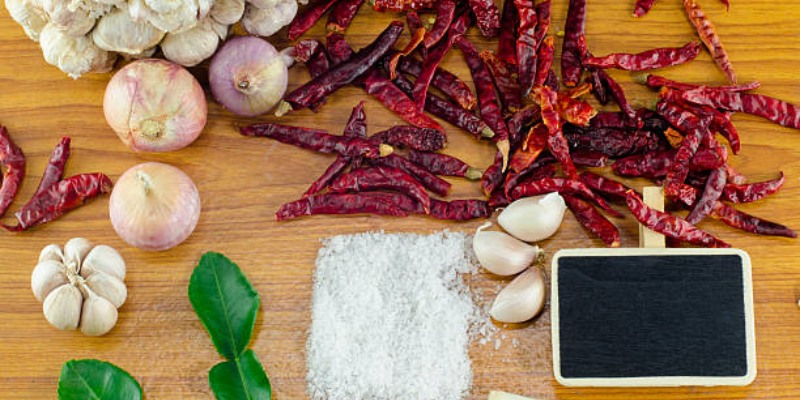
A good curry paste begins with high-quality ingredients. No shortcuts. Fresh lemongrass, galangal, garlic, shallots, fresh red chilli, kaffir lime zest, shrimp paste, and spices like coriander seeds and cumin seeds are the key ingredients. Some people skip galangal or kaffir lime leaves. Do not do this. These two bring the exceptional taste that people pay for at top Thai restaurants.
Dry spices matter too. Some cooks toast coriander seeds, cumin seeds, and peppercorns in a dry pan. This step releases strong odours that penetrate deeply into the paste.
Check your local Asian store or a trusted online market. Many people trust Whole Foods for fresh herbs and quality spices. Freshness makes the difference.
Tools Needed For Real Thai Paste
Some people say a blender or food processor is enough. However, the truth is that a PESTLE analysis does a better job. Crushing by hand breaks down the fibres in herbs and spices better than blades do. This releases oils and juices that help the paste stay smooth and thick.
A stone mortar and pestle is the best. The weight does the work. This old tool is still used in many Thai kitchens today. If you must use a blender, chop the ingredients into small pieces and blend in small batches. Add a little water if needed.
Step-By-Step Method For Thai Curry Paste
Prepare the herbs: Peel garlic and shallots. Slice the lemongrass thin so it breaks down more easily. Remove the seeds from chillies if a milder heat is desired.
Toast dry spices: Heat coriander seeds, cumin seeds, and peppercorns in a dry pan until they have a fragrant aroma. Let them cool.
Pound dry spices: Use the mortar and pestle to crush them into a fine powder.
Add dry to wet: Add garlic, shallots, chopped lemongrass, galangal, chili, kaffir lime zest, and shrimp paste. Pound until it turns into a smooth paste. This step takes time. A smooth curry paste brings a smooth sauce later.
Taste test: Some cooks add a pinch of salt at this stage. Salt helps crush the herbs faster.
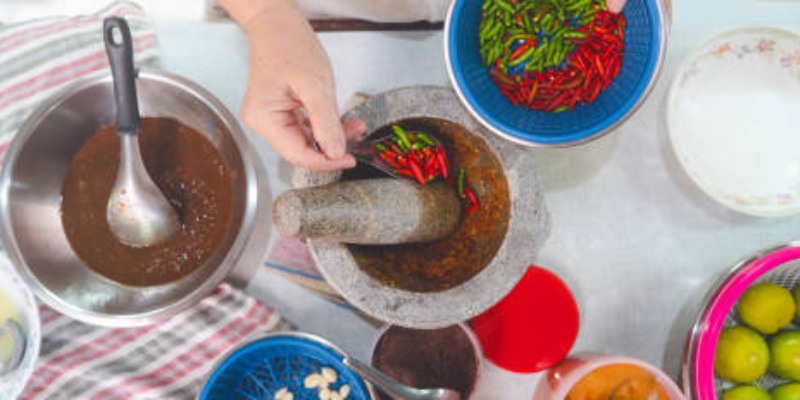
People who learn to make curry paste say it tastes better and costs less than store-bought jars. Homemade curry pastes can be stored in the fridge for up to two weeks if kept in a tightly sealed jar.
Keeping Curry Paste Fresh
Homemade paste does not last forever. It contains no artificial chemicals to preserve its quality for an extended period. To keep the paste fresh, store it in an airtight glass jar. Pour a thin layer of oil on top before sealing. The oil stops air from drying out the paste. Another tip is to freeze the paste in small portions. Many cooks use ice cube trays. One cube makes one pot of curry.
Freezing does not ruin the taste if done right. Take out what you need and leave the rest frozen. This saves time on busy days.
How To Use Homemade Curry Paste
Thai curry paste is not just for curry soup. It can be a base for fried rice, marinades, noodle dishes, and even grilled meats. Just mix the paste with coconut milk, stock, or stir-fry oil. Some people add fish sauce, sugar, or lime juice to achieve a more balanced flavour. These small steps enhance the flavours.
When cooking, start by frying the curry paste in hot oil. This step wakes up the herbs and spices. Once the oil smells strong and prosperous, add coconut milk or broth. Then add meat, fish, tofu, or veggies. Let it cook slowly so the flavour permeates every bite.
Make It Your Own
Thailand has many curry pastes — green, red, yellow, Massaman, and Panang. The steps stay the same, but the herbs change. Green curry uses fresh green chillies and sweet basil. Red curry uses dried red chillies. Massaman adds warm spices like cinnamon and nutmeg.
Some cooks also mix in new ingredients — such as turmeric for colour, ginger instead of galangal, or extra-fresh herbs from the garden. Just keep the balance. Thai curry is renowned for combining spicy, sweet, salty, and sour flavours in a single dish.
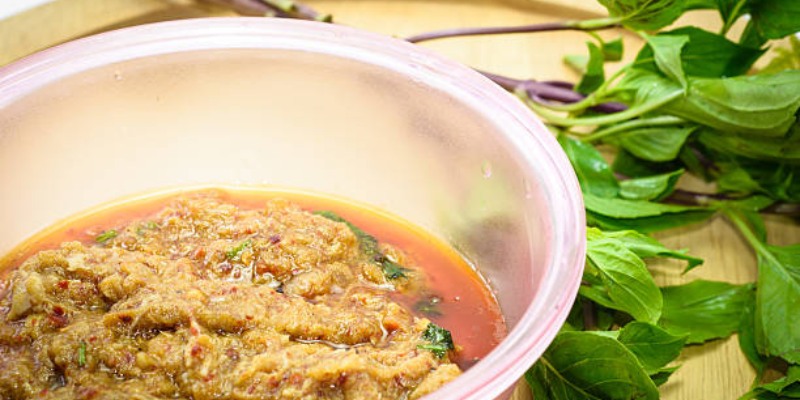
Easy Thai Curry Recipes You Can Make At Home
1. Thai Curry Chicken and Vegetables
Ingredients:
1 lb boneless, skinless chicken thighs, cut into bite-size pieces
2 tbsp Thai red curry paste (homemade or store-bought)
1 can (13.5 oz) coconut milk
1 cup sliced bell peppers (red and yellow)
1 cup broccoli florets
1 tbsp fish sauce
1 tbsp brown sugar
1 tbsp vegetable oil
Fresh basil or cilantro, for garnish
Lime wedges, for serving
Cooked jasmine rice
Instructions:
Heat oil in a large skillet over medium heat. Add curry paste and cook until fragrant (about 1 minute).
Pour in half the coconut milk and stir to combine. Add chicken and cook until it starts to turn opaque.
Add the remaining coconut milk, fish sauce, brown sugar, bell peppers, and broccoli. Simmer for 10-12 minutes, until the chicken is cooked and the vegetables are tender.
Garnish with fresh basil or cilantro. Serve with lime wedges over jasmine rice.
2. Thai Curry Fried Rice
Ingredients:
3 cups cold cooked rice
2 tbsp Thai green curry paste
2 eggs, lightly beaten
1/2 cup diced carrots
1/2 cup frozen peas
1/2 cup chopped onion
2 tbsp soy sauce
1 tbsp vegetable oil
Lime wedges and cilantro for serving
Instructions:
Heat oil in a wok or large skillet over medium-high heat. Add onions and carrots, stir-fry for 2 minutes.
Push the veggies to the side, add the eggs, and scramble until they are mostly cooked.
Add the curry paste and stir until fragrant.
Add rice and soy sauce, tossing to coat evenly with curry paste. Add the peas and cook until heated through.
Serve with lime wedges and fresh cilantro.
3. Thai Curry Shrimp Noodles
Ingredients:
8 oz rice noodles
1 lb shrimp, peeled and deveined
2 tbsp Thai red curry paste
1 can (13.5 oz) coconut milk
1 cup snap peas or green beans
1 bell pepper, thinly sliced
1 tbsp fish sauce
1 tbsp lime juice
1 tbsp vegetable oil
Fresh basil or cilantro for garnish
Instructions:
Cook rice noodles according to package instructions; drain and set aside.
Heat oil in a large skillet. Add the curry paste and cook until fragrant.
Pour in the coconut milk and bring to a simmer.
Add shrimp, snap peas, and bell pepper; cook until the shrimp are pink and the veggies are tender.
Add fish sauce and lime juice, then toss in cooked noodles until coated.
Garnish with fresh basil or cilantro before serving.
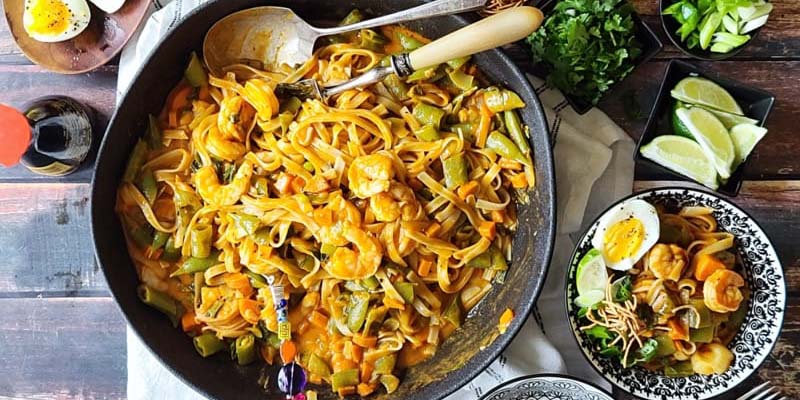
4. Thai Curry Veggie Soup
Ingredients:
2 tbsp Thai yellow curry paste
1 can (13.5 oz) coconut milk
4 cups vegetable broth
1 cup diced sweet potatoes
1 cup cauliflower florets
1 cup sliced mushrooms
1 red bell pepper, sliced
1 tbsp soy sauce
Juice of 1 lime
Fresh cilantro for garnish
Instructions:
In a large pot, whisk curry paste with a splash of coconut milk over medium heat until fragrant.
Add the remaining coconut milk and vegetable broth, then bring to a simmer.
Add sweet potatoes, cauliflower, mushrooms, and bell pepper. Simmer until veggies are tender (10-12 minutes).
Stir in soy sauce and lime juice.
Serve hot, garnished with fresh cilantro.
5. Thai Curry Tofu Lettuce Wraps
Ingredients:
1 block (14 oz) firm tofu, drained and crumbled
2 tbsp Thai green curry paste
1 tbsp vegetable oil
1/2 cup diced bell peppers
1/4 cup shredded carrots
2 tbsp soy sauce
1 tbsp lime juice
Butter lettuce or romaine leaves for serving
Fresh cilantro, crushed peanuts, and lime wedges for garnish
Instructions:
Heat oil in a skillet over medium heat. Add curry paste and cook until fragrant.
Add crumbled tofu, soy sauce, and lime juice. Cook for 5-6 minutes, stirring occasionally.
Add bell peppers and carrots, and cook for an additional 2-3 minutes.
Spoon the tofu mixture into lettuce leaves.
Top with fresh cilantro, crushed peanuts, and a squeeze of lime, then serve.
Is Homemade Curry Paste Worth It?
Some people say they have no time to make curry paste. But think of it this way: making your cuts down on hidden salt, sugar, and fillers. It boosts flavour without costing more. For anyone who loves cooking, this small work turns a basic dish into something people remember.
Additionally, using homemade paste can help improve health control. Many doctors say people eat too much salt and sugar from packaged foods. This can lead to long-term health problems. Cooking at home with real herbs and spices is one step to better eating habits.

